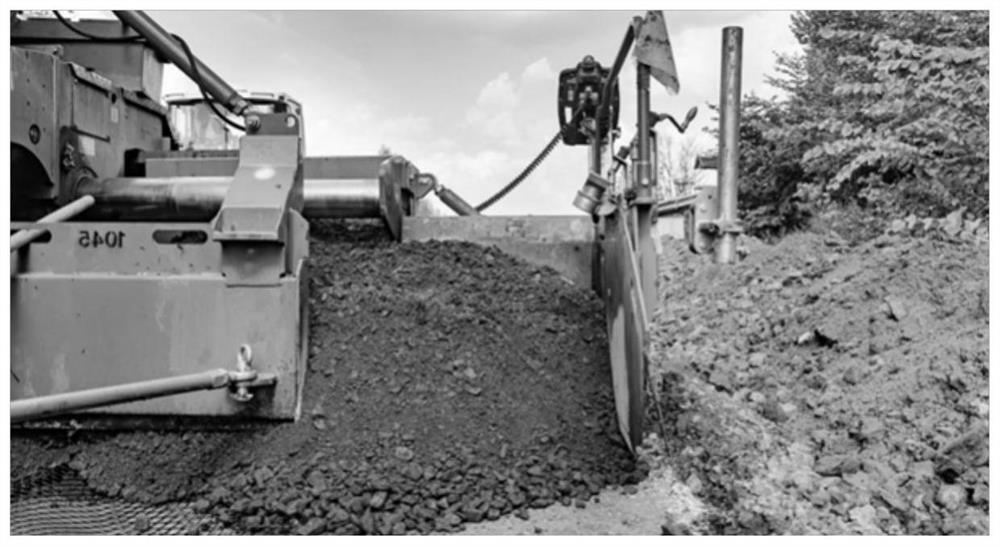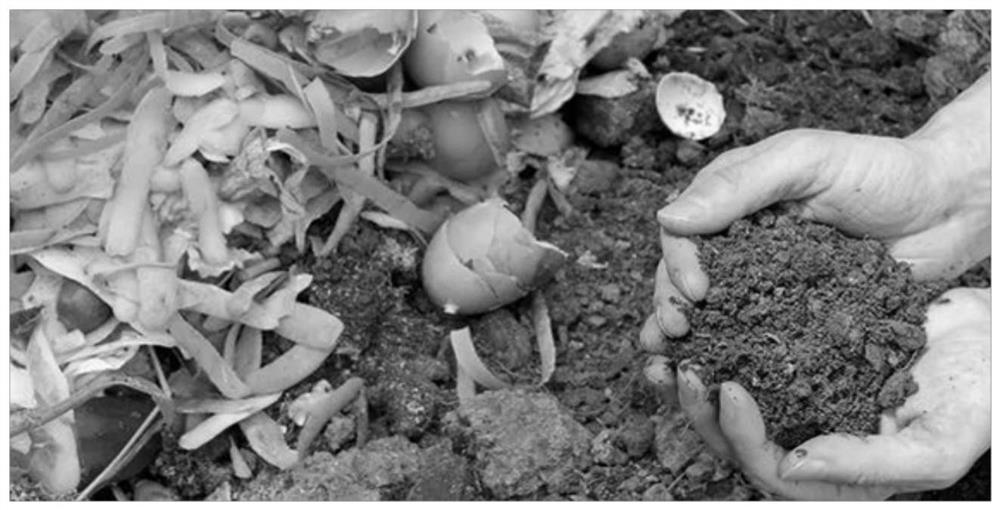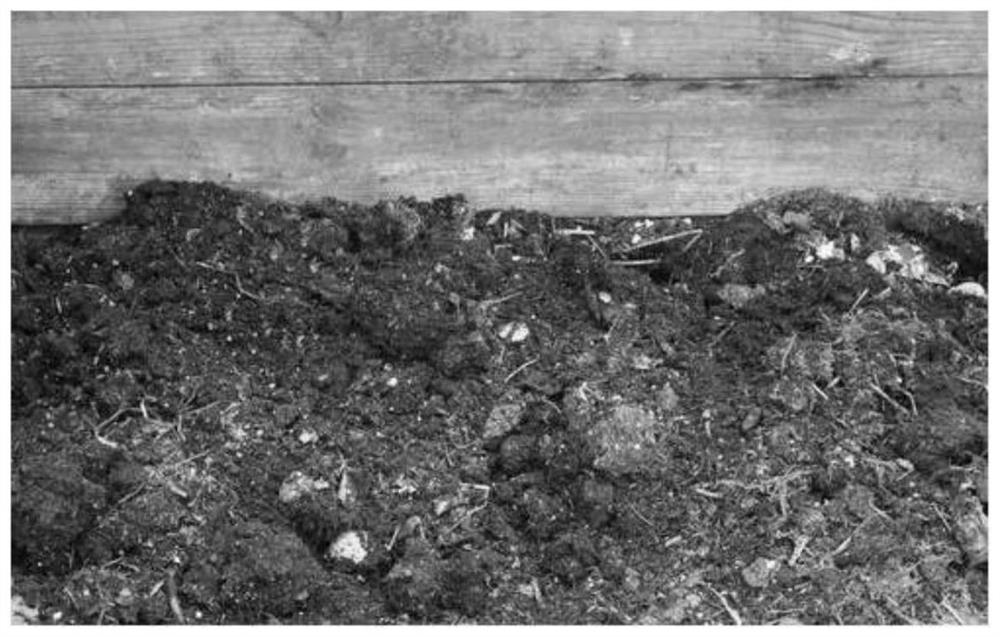Solid waste resource utilization method based on combination of microorganisms and full-bionic simulation
A technology of solid waste and microorganisms, applied in the fields of biological fermentation and soil pollution remediation
- Summary
- Abstract
- Description
- Claims
- Application Information
AI Technical Summary
Problems solved by technology
Method used
Image
Examples
Embodiment 1
[0050] Embodiment 1: A method for resource utilization of solid waste combined with microorganisms and full bionic simulation, including the following steps:
[0051] (1) Coal gangue with a particle size of 3mm is piled up at the bottom, and the piled thickness is 6m;
[0052] (2) Pile the bionic swamp mixture on the first layer of coal gangue, specifically a mixture of sludge, kitchen waste and fly ash, and adjust the water content of the mixture to 60%, so that the fermentation water meets the basic requirements of anaerobic fermentation; At the same time, the carbon-nitrogen ratio of the mixture was adjusted to 35:1, the pH value was 5.5, the salinity was 20%, the thickness of the compost was 3m, and anaerobic fermentation was carried out;
[0053] (3) Steps (1)-(2) are repeated alternately, and multi-layer stacking is carried out according to the stacking capacity, so as to improve the stacking efficiency and the total amount of processing;
[0054] (4) On the uppermost l...
Embodiment 2
[0056] Embodiment 2: A method for resource utilization of solid waste combined with microorganisms and full bionic simulation, including the following steps:
[0057] (1) Coal gangue and magnesium slag with particle size of 3mm are stacked at the bottom, and the addition of coal gangue is 10% of the volume of magnesium slag, and then vinegar grains are added, and the addition is 30% of the volume of magnesium slag; mix evenly, and the stacking thickness is 6m;
[0058] (2) pile up sludge on the first layer, the mixture of kitchen waste and fly ash, adjust the water content of the mixture to 60%, so that the fermentation moisture meets the basic requirements of anaerobic fermentation; simultaneously the carbon-nitrogen ratio of the mixture is adjusted to 35:1, pH value 5.5, salinity 20%, compost thickness 3m, anaerobic fermentation;
[0059] (3) Steps (1)-(2) are repeated alternately, and multi-layer stacking is carried out according to the stacking capacity, so as to improve t...
Embodiment 3
[0062] Embodiment 3 The method for modifying solid waste by microorganisms in cooperation with coal gangue materials, comprising the following steps:
[0063] (1) Magnesium slag is fully mixed with coal gangue, sieved, and the addition is 10% of the magnesium slag volume, and the particle size of the above-mentioned mixed material is controlled at 2 mm, and stacked for 8 days;
[0064] (2) Add vinegar residue, the addition amount is 30% of the volume of magnesium residue, mix well, and use wood vinegar to adjust the pH value to 5.5;
[0065] (3) Spray Pseudomonas fluorescens N1 + Xanthomonas campestris (equal solution volume mixing) on the surface of the material, and the daily spraying water volume is 1.00m 3 / m 3 soil for 35 days.
PUM
| Property | Measurement | Unit |
|---|---|---|
| particle size | aaaaa | aaaaa |
| particle size | aaaaa | aaaaa |
Abstract
Description
Claims
Application Information
 Login to View More
Login to View More - R&D
- Intellectual Property
- Life Sciences
- Materials
- Tech Scout
- Unparalleled Data Quality
- Higher Quality Content
- 60% Fewer Hallucinations
Browse by: Latest US Patents, China's latest patents, Technical Efficacy Thesaurus, Application Domain, Technology Topic, Popular Technical Reports.
© 2025 PatSnap. All rights reserved.Legal|Privacy policy|Modern Slavery Act Transparency Statement|Sitemap|About US| Contact US: help@patsnap.com



